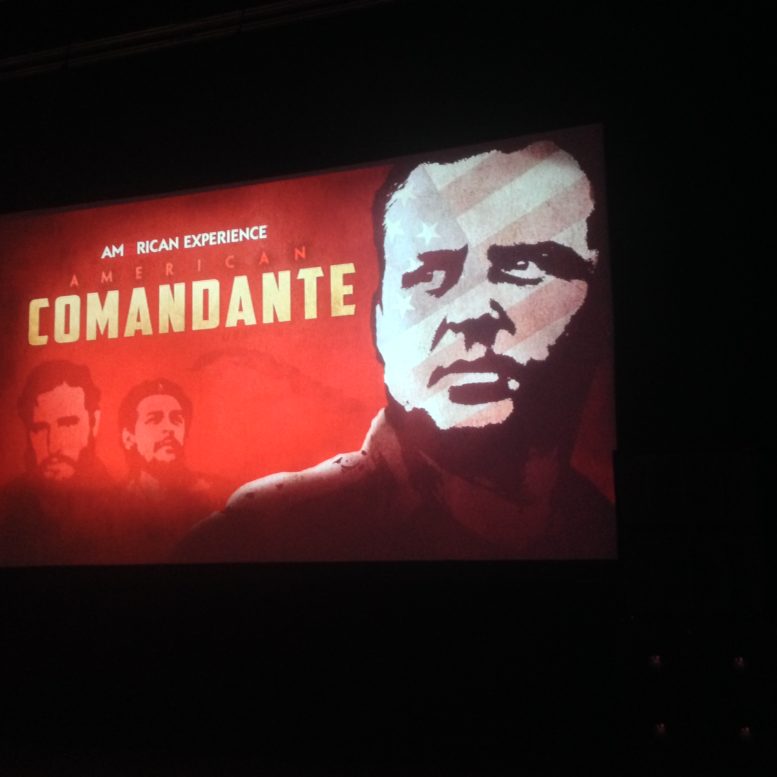William Morgan came home to Toledo Sunday afternoon.
The American adventurer had run away to join the circus as a child, and ended up dying in front of a firing squad in Cuba. Morgan could have been a character from the imagination of E.L. Doctorow. But as the new American Experience documentary “American Comandante” makes clear he was a real person who played a role in events that shaped our world. His story as a warrior in a revolution turned bad resonates with events we face now. “American Comandante” airs on PBS this week (9 p.m. Tuesday ).
WGTE hosted a preview screening Sunday with writer, producer and director Adriana Bosch discussing the program, and among the dignitaries in attendance was Morgan’s widow, Olga Rodriguez Goodwin. The documentary is really a story of war and love. To the extent Morgan could be grounded it was by Olga’s love and the love of his mother back in Toledo.
In giving her blessing to the film — Goodwin saw it for the first time Sunday — she said: “Thank you for bringing William home.”
Morgan carried what he learned in Toledo with him. “He grew up in a place where the American Dream was a palpable reality,” Bosch said.
That’s where the story starts. The opening scenes are home movie footage of the Ringling Brothers circus visiting Toledo. Shot by Morgan’s father, they feature a young William. (The film is apparently from a trove of film shot by the elder Morgan and in the possession of a family member.) Innocent enough. What boy doesn’t love the circus? But few would run off the next year to join up. He was returned to Toledo where he chaffed at any restrictions. He was expelled from two schools by 14 and then dropped out. He was in the Merchant Marine, and had connections to the Toledo mob. He enlisted in the Army, but that ended badly with him serving time in federal prison. He joined the circus as a fire-eater and married a snake charmer.
Morgan was constantly reinventing himself, though he remained a ne’er-do-well. Then he spun a tale to make a connection so he could become a soldier in the revolution to overthrow the regime of Fulgencio Batista. It was in the Escambray Mountains as a member of the Second Front that Morgan found redemption, love and the cause that would lead to his death.
His experience in Cuba was a tangled affair full of betrayals, reversals and even some grimly comic conspiring. The story it tells also has resonance today, and not just as it relates to relations with Cuba. This is a cautionary tale about revolutions. Castro promised democracy and individual rights. Instead he turned to the Soviet Union for support and imposed a totalitarian regime.
A Cuban-American Bosch said the story of disenchantment with the revolution is one shared by two generations of Cuban exiles. “What happened to William Morgan happened to all of us.”
The tale is so powerful it remains a taboo subject to this day in Cuba, so much so that for their safety the Cubans who worked on the film go uncredited, Bosch said. And those in power in Morgan’s homeland were disinterested in telling his tale, though it was the subject of front page articles during the revolution and its immediate aftermath.
This story of revolution, ideals, redemption and betrayal resonates around the world. As we saw in the Arab Spring, overthrowing a despot is difficult enough, establishing a working civil society in the wake of a revolution is the more daunting task and requires far different people, skills and values than waging war.
So view “American Comandante” as a cautionary tale as well as an engrossing adventure.

